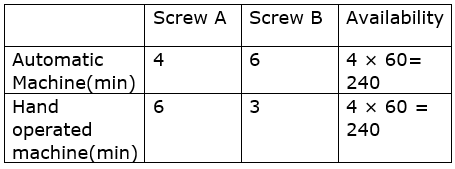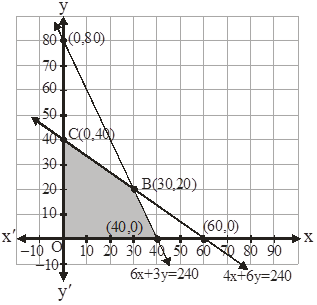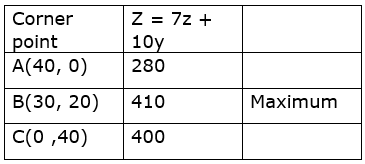A factory manufactures two types of screws, A and B. Each type of screw requires the use of two machines, an automatic and a hand operated. It takes 4 minutes on the automatic and 6 minutes on hand operated machines to manufacture a package of screws A, while it takes 6 minutes on automatic and 3 minutes on the hand operated machines to manufacture a package of screws B. Each machine is available for at the most 4 hours on any day. The manufacturer can sell a package of screws A at a profit of Rs 7 and screws B at a profit of Rs 10. Assuming that he can sell all the screws he manufactures, how many packages of each type should the factory owner produce in a day in order to maximise his profit? Determine the maximum profit.
Let the factory manufacture x screws of type A and y screws of type B on each day.
∴ x and y ≥ 0
The tabular form of the given data in the question is

The profit on a package of screws A is Rs 7 and on package of screws B is Rs 10.
∴ the constraints are
4x+ 6y ≤ 240
And 6x + 3y ≤ 240 and x, y ≥ 0
And total profit is Z = 7x+ 10y
The mathematical formulation of the data is
Maximizing Z = 7x+ 10y
Subject to constraints
4x+ 6y ≤ 240
And 6x + 3y ≤ 240 and x, y ≥ 0
The feasible reason is determined by the system of constraints is:

The corner points are A(40, 0) , B( 30 , 20) , C ( 0 , 40)
The value of Z at these points is

The maximum value of Z is at point B(30, 20)
Therefore factory should produce 30 packages of screw A and 20 packages of screw B to get the maximum profit of Rs 410.